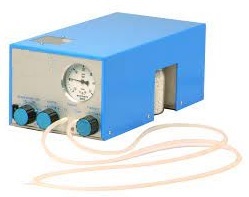- 40 ans d'expérience dans les régimes des animaux de laboratoire
- Une qualité optimale
Carfil Quality soutient le secteur des sciences de la vie
The pros and cons of the different methods of anesthesia
The success of studies depends on several things. One is to keep your animal under anesthesia in optimal condition during manipulations. We give a brief summary of the different methods of anesthesia. There are several methods of performing anesthesia on small laboratory animals (small rodents).
Below are the pros and cons of the 3 most commonly used methods:
Injectable agents: mostly i.p. or i.m.
Pros
+ Quick and easy to apply (1 injection)
+ Choice between a lot of products (rat/mouse)
Cons
- Due to variation (male/female/breed) or calculated time for procedure, it can be necessary to re-adjust the anesthesia
- Injection anesthesia is IN-FLEXIBLE
- extra injection agent if deeper or longer anesthesia is required.
- too deep/long anesthesia when ‘over injected’ or injecting antagonist.
Inhalation anesthesia: face mask
Pros
+ Flexible anesthesia ‘depth’/better control
+ Also for short(er) procedures
+ Different gasses (mixtures) possible
Cons
- No respiratory control (or pressure control)
- Adjusting could be relatively slow (if long tubes are used)
- A gas exhaust system is required
Inhalation anesthesia: endotracheal intubation and ventilator
Pros
+ For shorter and longer procedures
+ Different gasses (mixtures) possible
+ Full respiratory/-support possible
+ Quick adjusting when using a pressure, volume and frequency driven ventilator.
+ P.E.E.P. Setting possible (standard AND open thorax)
+ Economical use of anesthetic gasses
Cons
- Intubation technique is considered to be “difficult”
You can find a protocol for the safe use of anesthesia equipment here.


